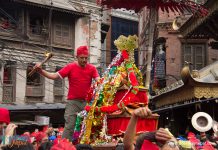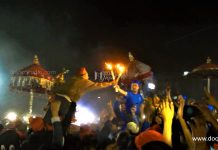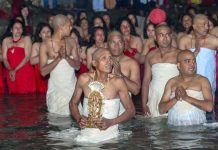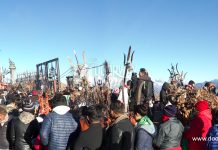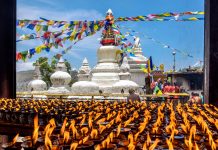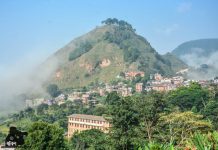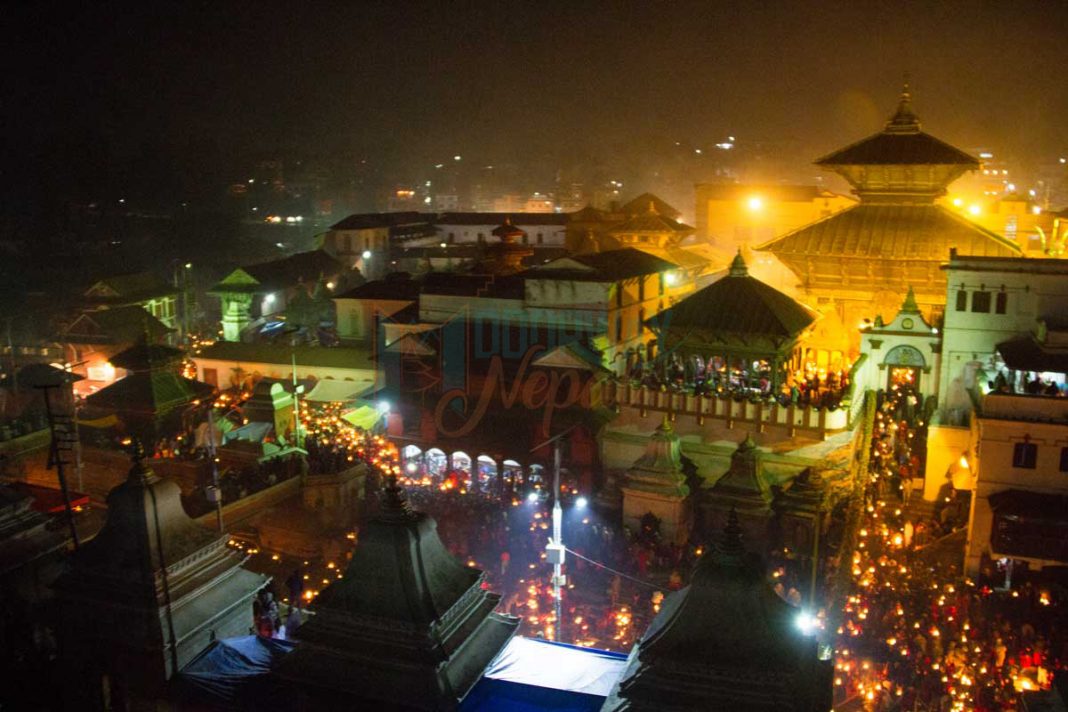Nepal is home to numerous gods and goddess. Elders are respected as gods here. And there are many rituals and ceremonies that are dedicated to the deceased ancestors. Among them Bala Chaturdashi is one of the important day for the Hindus. This festival is celebrated for the welfare of the departed soul.
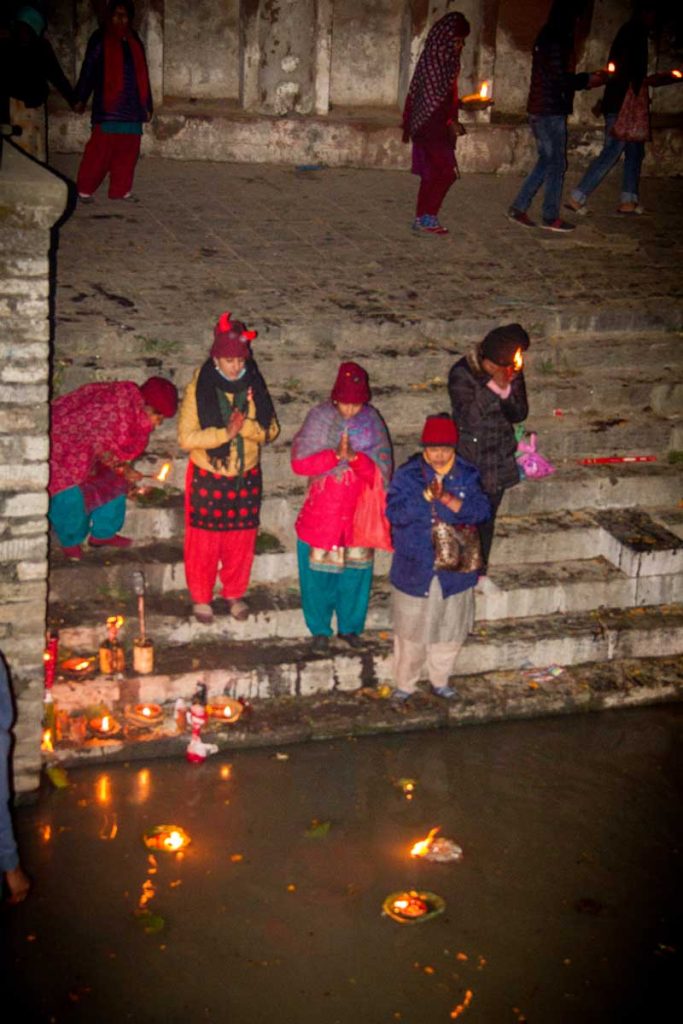
It is believed in Nepal that for one year after death the wandering soul hovers waiting for the Judgement Gates to be opened. So it is the unavoidable duty of living relatives to provide it with sustenance, comfort and peace until the gate opens. During this waiting period, and at certain times throughout their lives, the kinfolk are required to perform puja ceremonies and lamp-lighting rituals; penances and pilgrimages must be undertaken and sizeable offerings of food, money and clothing must be made in the name of the deceased. So the gods are appeased and requested to facilitate the soul along its difficult and hazardous journey, while at the same time the mourners enhance their own chances of easier access to heaven.
The festival Bala Chaturdasi is observed on the fourteenth day of the dark half of the moon in November or early December-Chaturdasi being the fourteenth day of every lunar fortnight, and Bala a most unfortunate Nepali man who, through no fault of his own, was transformed into a demon.
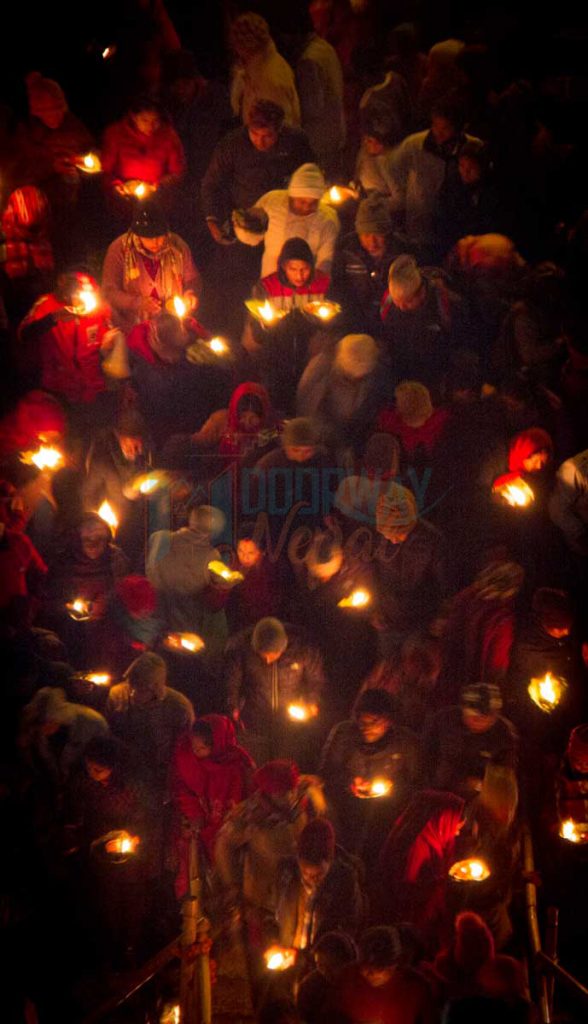
The rituals for the festival take place at the famous Pashupatinath temple of Lord Shiva on the western outskirts of Kathmandu. There are various myths associated with the festival and one such legendary story is that: Bala Nanda was a common Citizen who inadvertently consumed a morsel of the remains of a kinsman’s corpse which he was dutifully burning. Immediately after that Bala’s head turned into solid ball of silver. In this form he became a recluse in Pashupatinath forest, frequenting the burning ghats, terrorizing the people who came to cremate, hopelessly addicted to cannibalism. Finally the King called upon Brika Singh, a man who was known to have been a former friend of Bala, and ordered Singh to kill the demon. Singh and 12 men carried into the forest a cask of home-made wine on a funeral litter, just as corpses are still taken to cremation grounds, and induced Balasur to consume the contents. When the demon was drunk, Singh threw him to his death in a well. Then Singh cut off the demon’s silver head, had a special ornament fashioned from this precious metal and presented to Lord Shiva as an offering. When Shiva in return promised Singh any boon he desired, this man begged only for atonement for the murder of a friend. Shiva complied by saying, ‘In memory of Balasur, this day shall hence-forth be known as Bala Chaturdasi. On this day each year I shall wear the ornament made from Balasur, this day each year I shall wear the ornament made from Balasur’s silver head, and all those who come to my temple and scatter grains for their deceased family member shall gain heaven, and even the sin of manslaughter by such a person shall be expiated. And, Brika Singh, you must do likewise.’
The preparation begins on the day before Bala Chaturdasi where pilgrims gather during dusk. Then they make their offerings to Pashupatinath and emerge to search for a spot where the lamp-lighting ritual take place all-night. Some of the pilgrims take fast for special penance for their deceased family member. Moreover, long before daylight the ceremonies begin.

The lamps and flaming ceremonial torches are carried down to the river and cast holy bath, hurry to the temple once more to pay respects to Lord Shiva, and start an arduous, two-and –a-half-mile barefoot pilgrimage over and around the sacred hill, through the woods and temples, along a dusty path laid out with brambles, down rough stone steps and along the route the single-file devotees toss a scattering of satbhiu, a mixture of seven seeds and other offerings—rice, barley, wheat, lentil, corn, bits of radish, fruits, marigold blossoms mixed with red powder to please the gods and succor the souls of the deceased.
By sun-up many have completed this ritual pilgrimage, packed their belongings and started on to go back home. Most flock back into the main Pashupatinath temple to do Chaun Sathi—a ceremonial walk around the sixty-four Shiva lingams therein, making their offerings and receiving Shiva’s blessing. To overlook one of these lingams, which represent Lord Shiva himself, is to commit a sin which erases any merit gained.
This all-night vigil and the scattering of grains on Bala Chaturdasi completes one more of the year’s obligatory duties for the deceased, and it also honors the memory of a most unfortunate ancestor called Bala.



